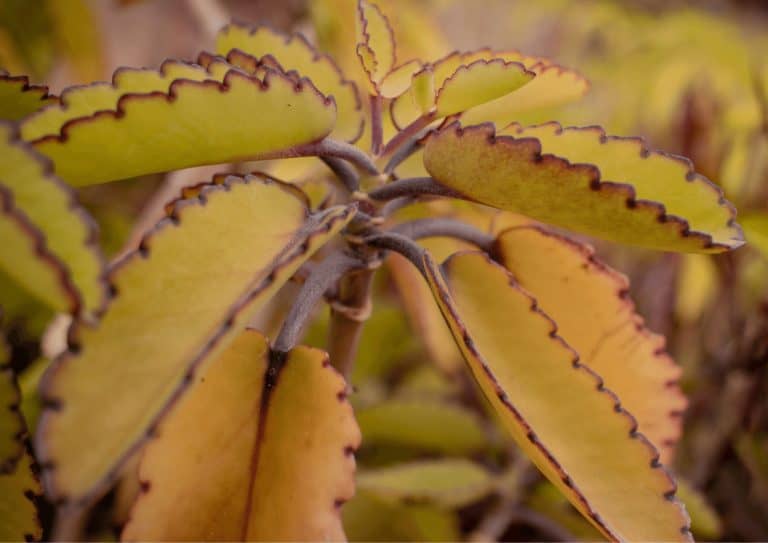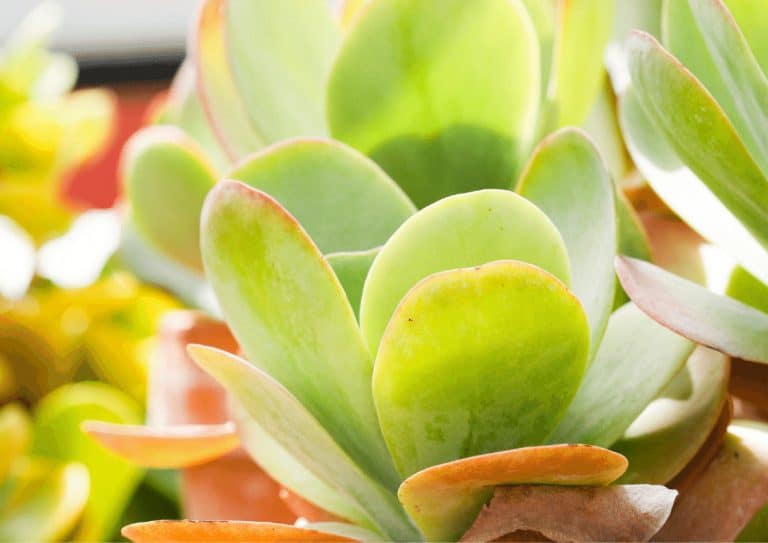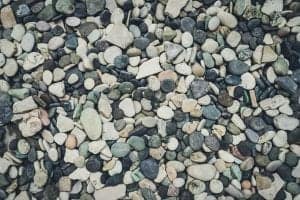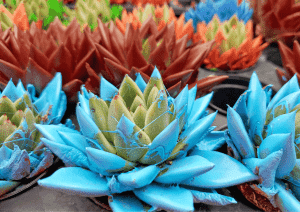Why Are My Kalanchoe Leaves Turning Yellow & How Can I Fix It?
- Lakeisha Ethans
- July 7, 2022
If you buy something using the retail links in our articles, sometimes we earn a small affiliate commission. This does not impact the products we recommend.
The Kalanchoe is not a single plant, but a genus of 125 individual succulent species that are a part of the stonecrop family. These tropical florae make for beautiful houseplants, and they’re relatively easy to care for, which further boosts their popularity. They require very little care and are alarmingly resilient.
Due to Kalanchoe’s hardiness, it can be quite alarming when you notice potential issues cropping up on the plant. Yellowing leaves can be an especially concerning indication that something is wrong. Sometimes, this isn’t a big deal, but in other cases, it can point to a severe underlying problem.
Kalanchoe leaves can turn yellow for many potential reasons, ranging from poor or improper care to the invasion of pests. Being able to identify the individual symptoms of each potential cause is crucial in saving your Kalanchoe plant from severe damage or death.
In this article, we’ll talk about the most common causes behind yellowing Kalanchoe leaves and will explain how each cause comes about and how the plant can be saved, salvaged, or fixed.

Can overwatering cause Kalanchoe leaves to turn yellow?
Because Kalanchoes are succulents, they don’t need a lot of watering, especially since they’re tropical flora. This means it can be quite easy to accidentally over-water them, as they should only be watered once their soil is completely dry and when their leaves are no longer drooping.
When overwatered, Kalanchoe plants’ leaves turn mushy and soft and begin to grow lighter and lighter in color. This can cause an extremely light discoloration that looks yellowish or like faded green. In severe cases, leaves will even turn translucent. These leaves may also shed very easily, even with the slightest touch.
Another sign of overwatering in a Kalanchoe is the swelling of its stems and leaves, eventually causing ruptures and bursts. Overwatered Kalanchoe plants are waterlogged, essentially meaning that their roots are flooding and can suffocate and rot, and the damage causes roots to struggle to absorb nutrients and moisture, thus slowly killing the plant.
If you think over-watering is the cause of your plant’s yellowing leaves, you should stop watering the plant immediately until its soil has completely dried out. Worsened stages of over-watering will require more intensive action, such as repotting the plant into a dry potting mix that is carefully mixed for adequate drainage.
You can save a dying, overwatered Kalanchoe by taking a cutting of the plant and propagating it. Since over-watering affects the plant gradually, you can salvage parts of the plant that aren’t yet affected.
Our Favorite Succulents And Supplies On Etsy
Can incorrect lighting conditions cause Kalanchoe leaves to turn yellow?
Kalanchoe plants primarily need direct sunlight, though they can continue to grow and survive with bright indirect sunlight instead. Whether you give them too much or too little sun, yellowing leaves are symptoms of incorrect lighting conditions for this flora.
With too much light exposure, Kalanchoe leaves can suffer from sunburn. This can either cause obvious crisping burns, that appear like drying brown spots or yellowing discoloration. This can also occur due to window glass heating the plant and causing burns in the sun.
Some Kalanchoe owners choose to never expose their plants to direct sunlight. This seems to depend on where you live; in hotter climates, direct sunlight may not be the best idea for these plants. If you notice burns appearing on your Kalanchoe, it’s best to opt for indirect light instead.
With too little light exposure, Kalanchoe leaves start to curl up as they turn yellow, losing their luster and becoming very dull in color. This occurs because chlorophyll is not produced as much in the shade, thus causing the plant to lose its green hue. You may notice that a Kalanchoe with too little light experiences accelerated upward growth, in search of more sun, in a process called etiolation.
Finding the right lighting balance can be tricky with Kalanchoe plants, especially if your house isn’t in an opportune location. West and east-facing windows are best, as what matters is that the plant received between 3 or 4 hours of daily sunlight. Extremely hot or bright sun, such as during midday or in summer, will harm the plant.

Can insufficient nutrients cause Kalanchoe leaves to turn yellow?
Like all plants, Kalanchoes need sufficient nutrients to thrive. A lack of minerals in the soil can lead to yellowing veins in the plant, which can then manifest in yellow leaves over time. Leaves will also likely become progressively less shapely, growing distorted and losing form and strength.
The most common nutrient that a Kalanchoe plant may lack is zinc, as the genus is especially sensitive to zinc deficiency. Nitrogen deficiency is also a frequent issue. A lack of any of these components, or any other necessary nutrients, can lead to yellowing leaves as the plant thins and struggles to properly grow.
It is not uncommon for houseplants, especially those grown indoors in pots, to have quickly depleting nutrients in their soil as it is washed out with watering and has no easy way to regenerate from nature.
Regular fertilization is a good way to ensure that your Kalanchoe is never devoid of minerals. This is especially crucial during big growth months, such as from April to September. Diluted liquid fertilizer does the trick relatively well.
However, do note that overfertilization can also cause yellowing leaves and similar damage, as well as leading to root burn. Kalanchoes don’t need a lot of fertilizer, and you’ll know if you’re overdoing it when brown spots begin to appear on its leaves. You should also never apply fertilizer in late fall or winter, as this is when Kalanchoes experience dormancy.
To prevent a lack of zinc, Kalanchoe should always be planted in a perlite and peat-rich soil with a mildly acidic pH of between 6.0 and 6.5. If you’re not sure how to mix potting soil well, you can opt to purchase substrate mixes made commercially available, specifically those made for succulents and cacti.
Excessive zinc deficiency can further be treated by zinc oxide or zinc sulfate, which are commercially available and can be added to the soil.
Can pests cause Kalanchoe leaves to turn yellow?
Pests feed on the nutrients in the soil and often feed directly on parts of plants themselves. This can, indeed, cause yellowing leaves due to depleted nutrition and moisture. Some pests can even poison a Kalanchoe and cause them to begin to wither.
It’s typically not difficult to spot pests on your Kalanchoe. Any sign of insects or creepy crawlies should be treated seriously. Kalanchoe often attracts bugs like scale insects, aphids, and mealybugs, with the latter being the most common.
Mealybugs appear as small lumps, white in color, and can be compared to cotton wool in appearance. Aphids, meanwhile, are even more dangerous, reproducing at extremely quick rates and leeching off succulents at alarming rates.
You can avail of common pest control methods to get rid of pests on your Kalanchoe. However, be prepared to do this multiple times, as pests can be resilient and develop adaptations and resilience to certain pesticides. If worse comes to worst, you’ll need to transplant your plant into a new pot to be rid of the pests.
Take home message
In most cases, the yellowing of a Kalanchoe plant’s leaves is due to improper care. This can occur because of overwatering, which damages roots. It can happen due to incorrect lighting, which either burns leaves or deprives them of nutrients. It can be a result of insufficient nutrients in the soil, requiring simple fertilizer or zinc and nitrogen supplements to fix.
Yellowing Kalanchoe leaves may also occur due to pests, which require immediate attention and must be quickly addressed. But regardless of the cause behind your plant’s yellow leaves, you must do what you can to rectify the problem to avoid long-term damage or the loss of your plant.

Lakeisha Ethans
Houseplant Writer
Mother to two humans and hundreds of plant babies. Lakeisha uses her 15 years of experience as a content writer to specialise in simplifying what you need to know to grow and care for all indoor plants.
Similar Posts
What Is A Pebble Tray For Houseplants? (With Infographic)
In terms of caring for your indoor plants, using a pebble tray is about as simple as it gets yet the method can be really effective at improving the health of some...
How To Remove Paint From Painted Succulents? (Acrylic + Spray Paint)
Painted succulents offer aesthetic value, but paint is bad for plants. How can you get rid of paint quickly and efficiently without damaging the succulent?



